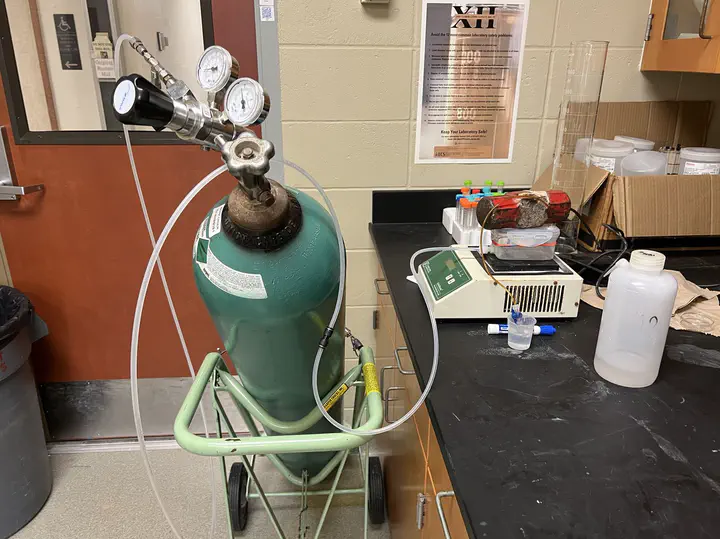How to fumigate
 Drying samples with a continuous N2 flow
Drying samples with a continuous N2 flowAs a paleoclimatologist and geochemist who studies fossil soils, one thing we often look at is the stable carbon isotopic composition (
In terms of carbonate-containing soils, we need to remove the carbonate before measurement, because the
To tackle this issue, another method to remove carbonate called “acid fumigation"is invented. Specifically, the soil samples are directly loaded into silver capsules, wetted, and then put into a desiccator filled with HCl gas. The acid gas will then be diffused in soil water and dissolve carbonates. A key procedure for this method is to ensure that samples are completely dried so that no HCl resides in the soil samples and harms the mass spec.
During my previous fumigation attempt back in China, I usually dry the samples in the oven, which left the oven with potential corrosion and failed to completely remove the HCl (anomalies in the MS curves). So when Jeff the lab manager showed me his way of drying the samples the other day, and I was totally blown away. The trick is to use a continuous gas flow to dry the samples (Jeff uses N2 since it’s inert and cheaper). The gas flow creates a low pressure for the air above the sample capsule, allowing soil water to be fully evaporated. The dried samples were then wrapped with another layer of tin capsules before combustion. Apparently this method is valid since the mass spec is performing perfectly.
The next step for is to compare the